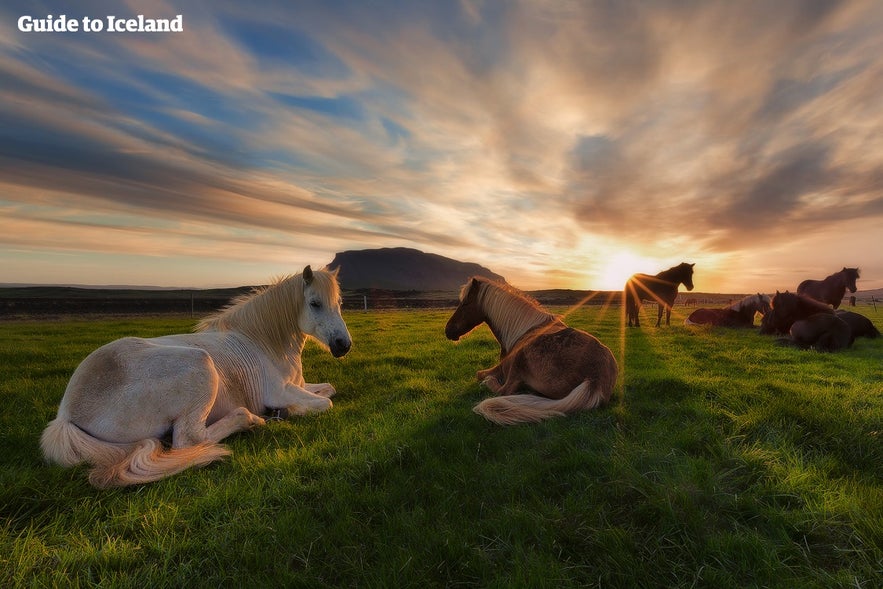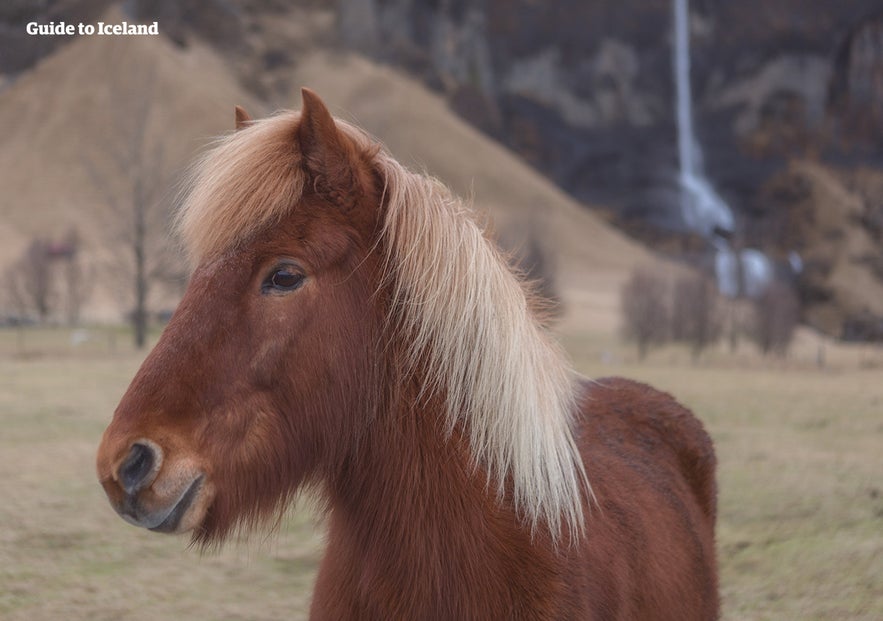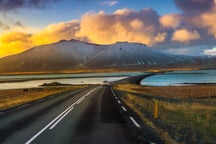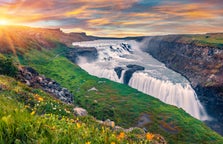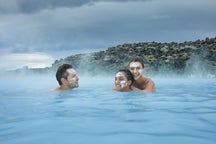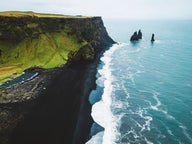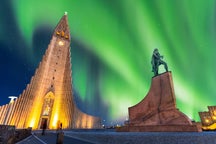Known for its friendly temperament, unique gait, and pure bloodline preserved for over a thousand years, the Icelandic horse holds a special place in the hearts of Icelanders. Read on to discover why this horse is so beloved, different, and unforgettable.
Sturdy, spirited, and steeped in history, this remarkable breed is far more than just a mode of transport — it’s a national treasure. The Icelandic horse is as local to this volcanic land as its people. It arrived on the settlers' first ships and has remained a loyal friend and vital servant ever since.
Why You Can Trust Our Content
Guide to Iceland is the most trusted travel platform in Iceland, helping millions of visitors each year. All our content is written and reviewed by local experts who are deeply familiar with Iceland. You can count on us for accurate, up-to-date, and trustworthy travel advice.
The Icelandic horse holds a special place in people’s hearts, and meeting one makes it clear why. More curious, intelligent, and independent than most breeds, these traits make horse riding tours in Iceland truly unique.
But what truly sets the Icelandic horse apart from other breeds? Is it fair to call it a pony, or does its strength and spirit demand a different title? And if you’re dreaming of riding one across Iceland’s rugged landscapes, where should you go? Fortunately, you’ll find plenty of accommodations in Iceland, near popular riding destinations.
In this article, we have compiled essential information about this magnificent animal. We explore the breed's history, unique traits, and its special relationship with the people of Iceland.
Key Facts About the Icelandic Horse
-
Ancient and Pure Breed: Icelandic horses have been isolated since the Viking Age, with no crossbreeding allowed.
-
Small but Strong: Pony-sized but powerful — always called a horse due to strength and stamina.
-
Five Gaits: Along with walk, trot, and canter, they have two unique gaits: the smooth tolt and the high-speed skeid.
-
Built for Iceland: Hardy, sure-footed, and equipped with a thick coat to handle rough terrain and harsh weather.
-
Cultural Icon: They're a beloved national symbol, featured in Icelandic sagas, art, and daily life.
-
Friendly and Smart: Known for calm temperaments and strong bonds with people.
-
Ride Across the Land: Popular for tours through lava fields, black sand beaches, green valleys, and more.
Interacting With Icelandic Horses
You'll often spot Icelandic horses as you visit different attractions on the Ring Road throughout the country. Even when the weather isn't the best, they’ve adapted to Iceland's winter challenges. When you encounter them, just remember to follow a few simple guidelines:
-
Avoid petting the horses, as they might bite or kick. This behavior can lead to harmful habits that undo costly training, making it more difficult for a rider later on.
-
Do not feed the horses. Like with petting, it can undo training, leading to dangerous behaviors for humans. They have sufficient food, and extra treats could harm their health.
-
Avoid entering private property to view Icelandic horses, as they are predominantly housed on private land.
-
Never ride a horse without the owner's express permission.
-
Avoid stopping abruptly or parking in hazardous locations. Do not park where visibility is limited, on icy roads, or on private property just to see Icelandic horses.
If you want to photograph horses in Iceland, park your car legally in a visible spot. To get up close and personal with these animals, you need permission from the landowner, or you could book a horseback riding tour.
Top Horse Riding Tours
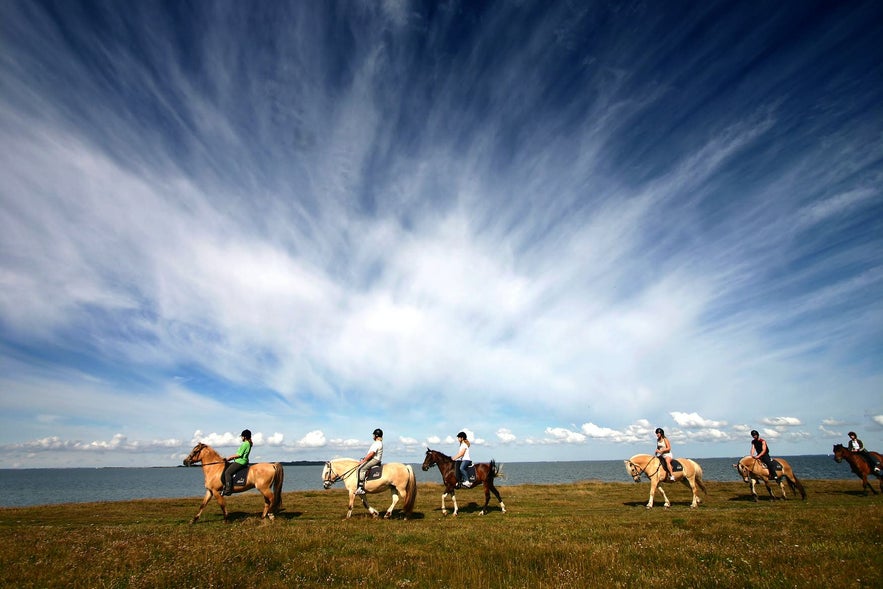
You can add an excursion to ride Icelandic horses to many self-driving tours, or find vacation packages where you can enhance your vacation with horseback riding.
-
Top-Rated Horse Riding Tour: Saddle up for a unique adventure as you discover the breathtaking volcanic landscape outside Reykjavik on horseback.
-
Horse Riding Tour on the Black Sand Beach From Vik: Gallop along black sand beaches for an unforgettable South Coast experience.
-
Easy Horse Riding Tour through Lava Fields: Embark on a horseback riding adventure through Icelandic lava fields near Reykjavik.
The History of the Icelandic Horse
The breed's first members arrived aboard the Norse settlers' Viking ships sometime between A.D. 860 and 935. Although sources don't agree on the breed's exact ancestry, many of its characteristics can be traced to these origins.
Some claim that the animals were chosen for their short but sturdy stature, resembling an “Icelandic pony,” which made them ideal for overseas travel. When you think about it, it is much easier to transport a ship full of Icelandic ponies across the roaring ocean if they keep their footing and take up less space on the boat.
- See Also: Where Did Icelanders Come From?
- See Also: The History of Iceland
Since then, selective breeding has shaped the Icelandic horse into what it is today. It has also changed and adapted to its environment, sporting a thick winter coat in the colder months, which it sheds come springtime.
High winds and snowstorms do not faze the horse, which is capable of impressive feats, such as wading through glacial rivers and crossing rough terrain.
In A.D. 982, the Icelandic parliament, Althingi, enacted laws that prohibited the importation of other horse breeds into the country. This guaranteed that the breed remained isolated on the island for over a thousand years.
As a result, it is considered one of the purest horse breeds in the world. Although individual animals may be exported, they may never return once they leave.
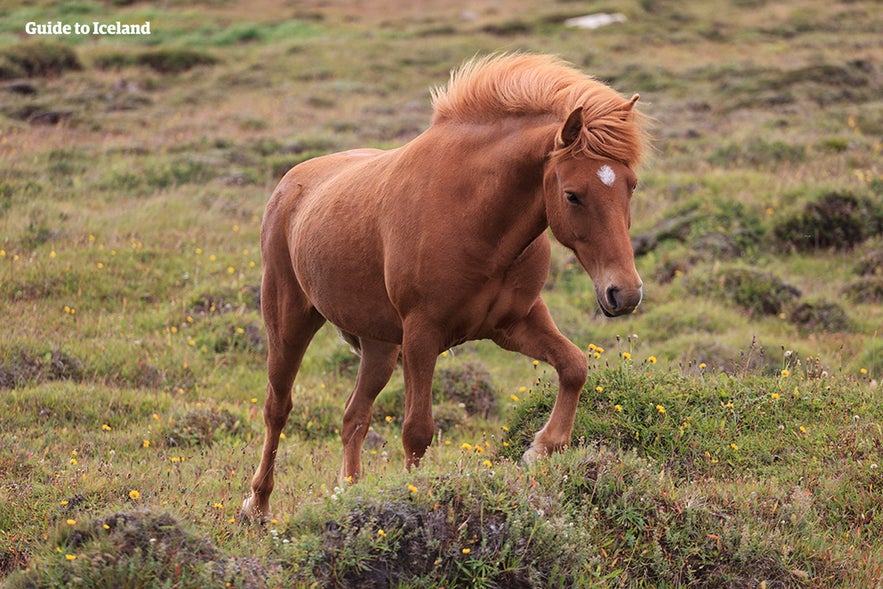
The average animal may live up to 40 years, with the oldest reportedly reaching 59. The horse's physical excellence is far from the only reason the Icelandic people adore it. The personality of Icelandic horses, especially their spirited yet gentle temperament, is also widely celebrated.
Because these creatures have never faced predators in their natural environment, they are not easily startled, which makes them very approachable and friendly.
What Are the Specific Traits of Icelandic Horses?
Icelandic horse characteristics are unique. Let’s talk about its five gaits. Other equine species typically possess the three general gaits — walk, trot, and canter/gallop. In comparison, the Icelandic horse possesses two additional gaits called tolt and skeid, or “flying pace.” Each animal's ability to perform these two gaits defines its value.
What are those gaits? How do they function? Perhaps more importantly, how do they feel?
The tolt is a four-beat, lateral ambling gait known for its speed and exceptional riding comfort, so imagine a smooth trot as you glide swiftly forward.
The skeid, however, could be described as a rhythmic gallop, a two-beat lateral gait with a moment when all four feet are off the ground. This brisk gait feels like flying up to 30 miles per hour (48 kilometers per hour).
Beyond their unique gaits, the Icelandic horse also boasts distinctive physical characteristics. They come in a rainbow of colors, with over 40 basic colorings officially listed and over 100 variations. Additionally, the Icelandic people have long believed that a horse's color might reflect its personality. Their coloring isn’t the only unique physical feature they have.
This might be the time to address the giant Icelandic pony in the room: Is the animal a pony, or is it a horse? Our advice to you right now is never to ask an Icelandic person that question.
But since we're on the subject, ponies are more miniature (under 57 inches or 144 centimeters) and stockier than horses, with a thicker mane, coat, and tail. Locals will passionately argue that this breed possesses the genetic traits, intelligence, and strength typical of horses.
The Icelandic Horse in Mythology and Folklore
 National pride for the Icelandic horse dates back to the time of settlement. The horse is more than just a means of transport; it symbolizes cultural identity. When settlers first arrived in Iceland, along with the horses, they brought stories, reverence, and mythos that would shape the nation’s relationship with these animals for centuries.
National pride for the Icelandic horse dates back to the time of settlement. The horse is more than just a means of transport; it symbolizes cultural identity. When settlers first arrived in Iceland, along with the horses, they brought stories, reverence, and mythos that would shape the nation’s relationship with these animals for centuries.
Throughout history, Icelanders have celebrated the horse as a dependable servant, a loyal companion, and a spiritual presence. According to Gragas, Iceland’s first written law code, stealing a horse was among the gravest offenses, punishable by banishment.
In the Viking Age, outlaws could be killed on sight. The inclusion of horse theft in such severe legal consequences reflects how deeply the animal was woven into the fabric of Icelandic life and survival.
 In Norse mythology, horses were cosmic forces. Odin’s eight-legged horse, Sleipnir, was said to traverse both the physical and spiritual realms. According to local folklore, Sleipnir’s hoofprint formed the horseshoe-shaped canyon of Asbyrgi in North Iceland, a place still revered for its haunting beauty and mythical origin.
In Norse mythology, horses were cosmic forces. Odin’s eight-legged horse, Sleipnir, was said to traverse both the physical and spiritual realms. According to local folklore, Sleipnir’s hoofprint formed the horseshoe-shaped canyon of Asbyrgi in North Iceland, a place still revered for its haunting beauty and mythical origin.
The horse’s presence extended even into death. In Viking burial rituals, only kings and chieftains were buried with their horses, a sacred act that underscored the animal’s spiritual importance. A trusted steed was considered the ideal guide in a society that believed the dead journeyed to another world.
 Icelandic people revere and admire their national horse. This reverence continues today in storytelling and everyday practices, such as naming conventions and riding traditions, reflecting a people’s deep respect for their equine companions.
Icelandic people revere and admire their national horse. This reverence continues today in storytelling and everyday practices, such as naming conventions and riding traditions, reflecting a people’s deep respect for their equine companions.
Of Horses and Men — Where To See Icelandic Horses
In the past, the horse was essential to the survival of the Icelandic people; it served as their best and most reliable means of transportation and was often, quite literally, a lifesaver.
Many tales recount riders getting lost in blizzards within Iceland's unforgiving wilderness. In these stories, the horse kept them warm until help arrived or found its way home, carrying the exhausted rider back to safety.
Transportation changes and road improvements throughout the 20th century have significantly reduced the need for horses. Yet, they continue to play an essential role in the lives of the Icelandic people.
Horses are still used for sheep-herding in the Highlands, while many are kept for leisure riding. Riding lessons are popular among children across both urban and rural areas, and competitions in racing and showmanship have been held annually since the late 1800s.
With the recent growth in tourism, demand for quality riding horses has surged. A traveler cannot claim to have fully appreciated Icelandic nature without seeing it from atop a native horse!
Horse riding tours present an opportunity to glide through Iceland's unique landscapes.
They allow visitors to experience the land as its early settlers did — a practice that continues with their descendants today.
FAQs About Icelandic Horses
Still curious about Icelandic horses? Here are answers to commonly asked questions about this iconic Icelandic horse breed.
Are Icelandic horses easy to ride?
Yes. Their calm personality and smooth gait make them a great ride for beginners and experienced riders alike.
Where are the best places in Iceland to ride Icelandic horses?
You’ll find great riding tours near Reykjavik, through lava fields, or along the black sand beaches near Vik. Many travel packages include options to add horseback riding.
Is it true that Icelandic horses can’t return once they leave Iceland?
Yes. To protect the breed from disease and maintain purity, Icelandic law bans re-entry for any horse that's been exported.
Can children ride Icelandic horses?
Absolutely. Their smaller size and gentle nature make them ideal for children and families.
Do Icelandic horses’ names mean something?
Yes. Horse names in Iceland often reflect color, personality, or mythology. A national naming committee even regulates what they can be called. Two of the most popular names are Perla (female, pearl) and Blesi (male, referring to a light colored patch on a horse's face).
Visit Icelandic Horses
Icelandic horses are more than just a breed; they are a living testament to Iceland's history, culture, and spirit. Their unique gaits, hardy nature, and friendly temperament make them beloved companions and symbols of Icelandic pride.
Have you ridden an Icelandic horse? Tell us about your experience in the comments below!

